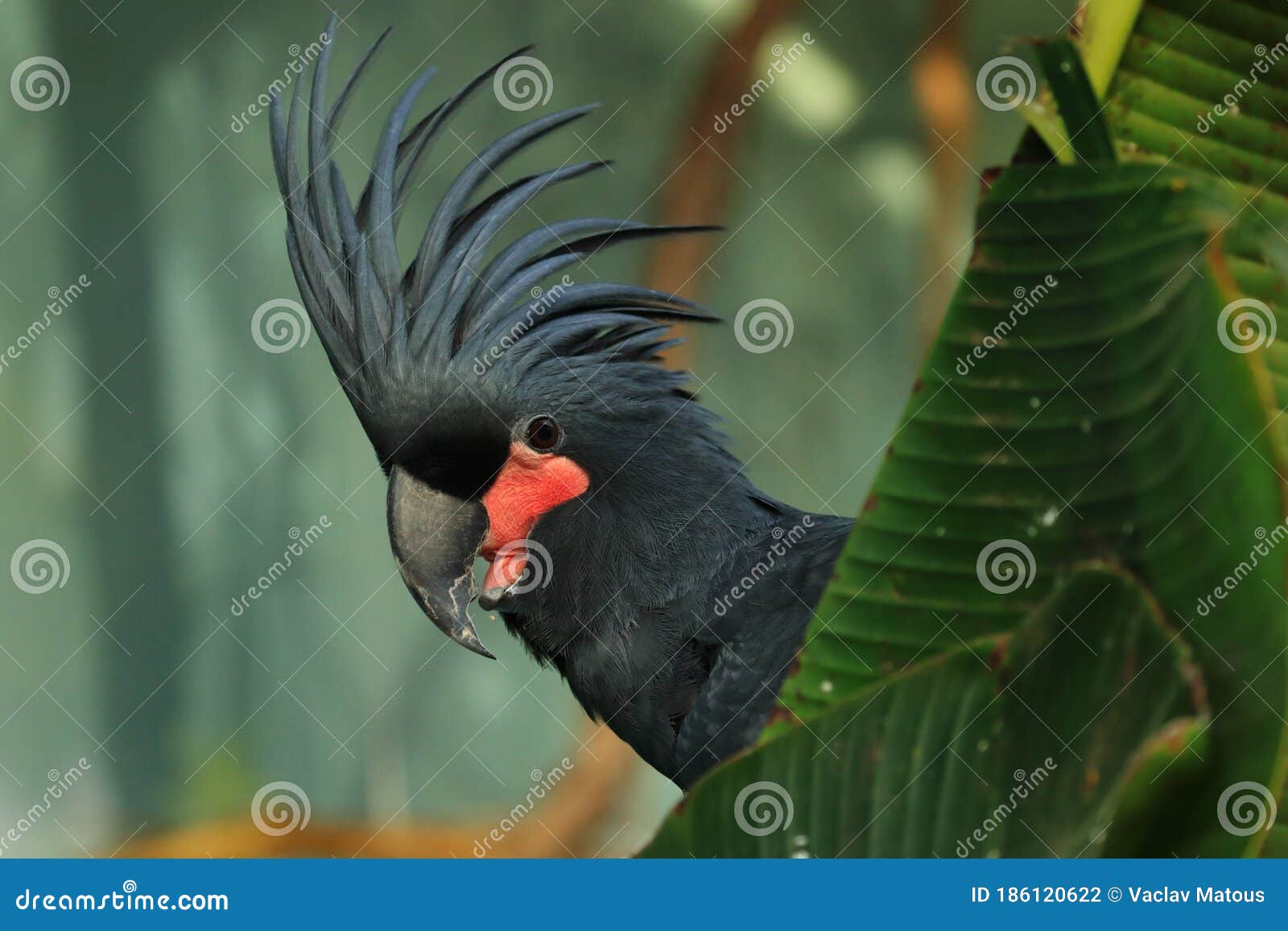

Most importantly, my family encouraged both my interest and the extensive menagerie that sprung from it. One might imagine this to be an unfortunate set of circumstances for a person born and raised in the Bronx, but, in actuality, quite the opposite was true. I believe that I was born with an intense interest in animals, as neither I nor any of my family can recall a time when I was not fascinated by creatures large and small. To read the rest of this article, click here. Pairs return to their territories in the evening, but roost separately. Unlike other cockatoos, which forage in large flocks, “palms” feed singly, in pairs, or in groups of up to 7 in number. The lower beak meets the upper only at the tip, leaving the mouth always slightly open. Extraordinarily powerful, this impressive structure assists the bird in securing its diet of large nuts (in captivity, even Brazil nuts pose no problem), seeds, fruits and leaf buds. The maxillary, or upper beak, is twice the size of that of its largest relative (its genus name, Probosciger, alludes to the beak).

#PROBOSCIGER PATCH#
The face patch can also be covered with feathers during communication displays.
#PROBOSCIGER SKIN#
The skin on these patches varies in color from dull red to bright crimson, depending on the bird’s mood, stress level, health and other factors of which we are as yet unaware. Palm cockatoos are also unusual in possessing bare patches on the cheeks. In fact, “palms” seem prone to odd modes of self-expression - when frightened, rather than hissing in typical cockatoo fashion, they stamp their feet! This behavior, known as “drumming”, is repeated anywhere from 2 to over 100 times, and creates quite a racket. Most likely as an adaptation to a thickly forested habitat where sound travels poorly, palm cockatoos beat sticks and large nuts against hollow trees when communicating with others of their kind. goliath being the largest.Īlthough this bird is unique among cockatoos in many ways, perhaps its most distinguishing feature is tool use - a phenomenon quite rare among birds in general. Three subspecies have been identified, with New Guinea’s P. They are native to northern Australia’s Cape York Peninsula, New Guinea, Aru Island and smaller neighboring islands. Palm cockatoos, also known as black palm cockatoos or goliath aratoos, are the only tropical rain forest-adapted members of their family - the rest being more at home in dry, often sparsely vegetative habitats. Today I would like to tell you about my involvement with the first large group of palm cockatoos brought into this country and to discuss some of this magnificent creature’s unique characteristics.īut first, if I may, a bit more about what distinguishes this bird from the approximately 20 other species belonging to the family Cacatuidae, the cockatoos (all of which are members of the order Psittaciformes, along with parrots, lories and macaws). Adding to the air of imposing size, the head is topped by a crest of long feathers and the beak is massive.

Its jet black feathers are set off by powdery gray down and highlighted by brilliant red cheek patches. At nearly 30 inches in length and with a 30-inch wingspan, this giant among cockatoos approaches the hyacinth macaw, Andorhynchus hyacinthus, the largest of the world’s 350+ species of parrot-like birds, in size.

It is not easy for a single species to stand out among a group of birds as spectacular as the cockatoos, but the striking palm cockatoo does so quite handily.


 0 kommentar(er)
0 kommentar(er)
